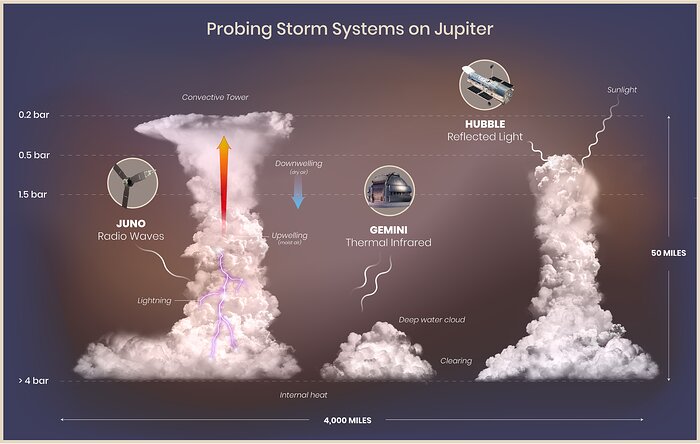Cloud structure illustration
This illustration of lightning, convective towers (thunderheads), deep water clouds, and clearings in Jupiter’s atmosphere is based on data collected by the Juno spacecraft, the Hubble Space Telescope, and the international Gemini Observatory. Juno detects radio signals generated by lightning discharges. Because radio waves can pass through all of Jupiter’s cloud layers, Juno is able to detect lightning in deep clouds as well as lightning on the day side of the planet. Hubble detects sunlight that has reflected off clouds in Jupiter’s atmosphere. Different wavelengths penetrate to different depths in the clouds, giving researchers the ability to determine the relative heights of cloud tops. Gemini maps the thickness of cool clouds that block thermal infrared light from warmer atmospheric layers below the clouds. Thick clouds appear dark in the infrared maps, while clearings appear bright. The combination of observations can be used to map the cloud structure in three dimensions and infer details of atmospheric circulation. Thick, towering clouds form where moist air rises (upwelling and active convection). Clearings form where drier air sinks (downwelling). The clouds shown rise five times higher than similar convective towers in Earth’s relatively shallow atmosphere. The region illustrated covers a horizontal span one third greater than that of the continental United States.
Credit:NASA, ESA, M.H. Wong (UC Berkeley), and A. James and M.W. Carruthers (STScI)
About the Image
| Id: | noirlab2011c |
| Type: | Artwork |
| Release date: | May 7, 2020, 3 a.m. |
| Related releases: | noirlab2011 |
| Size: | 2143 x 1360 px |
About the Object
| Category: | Solar System |
